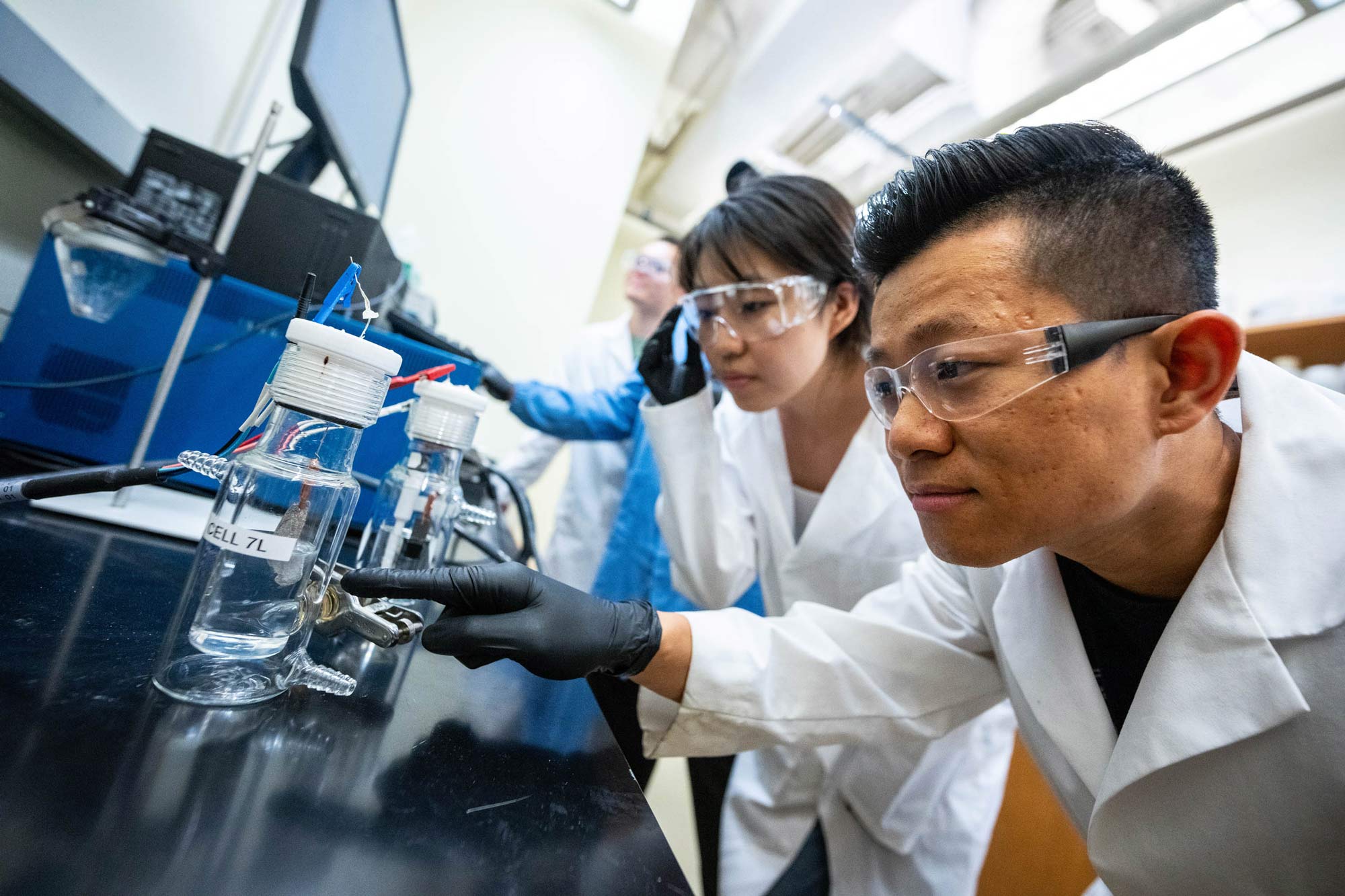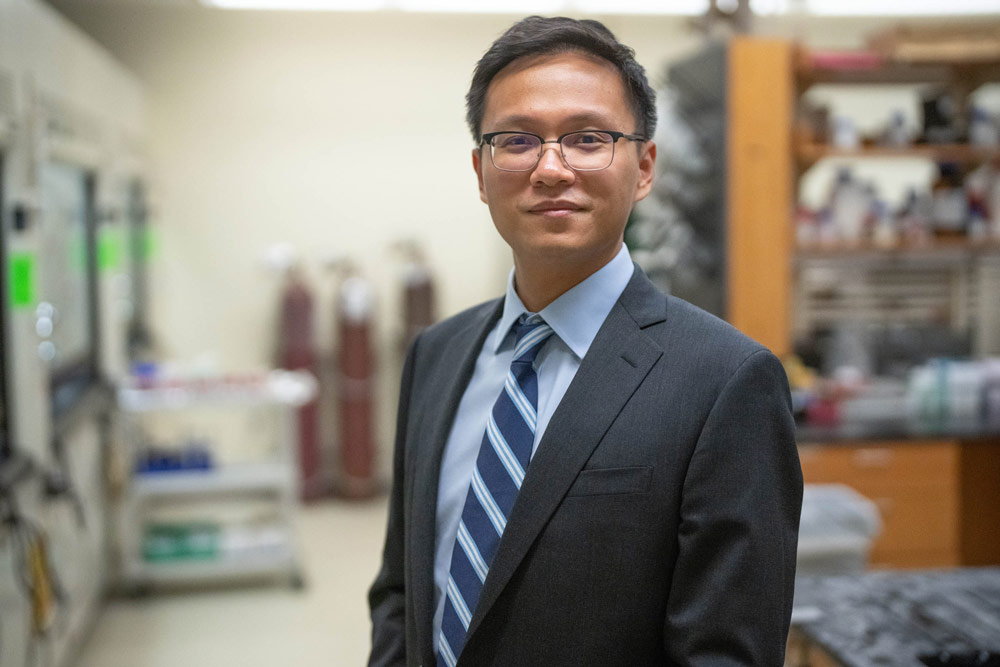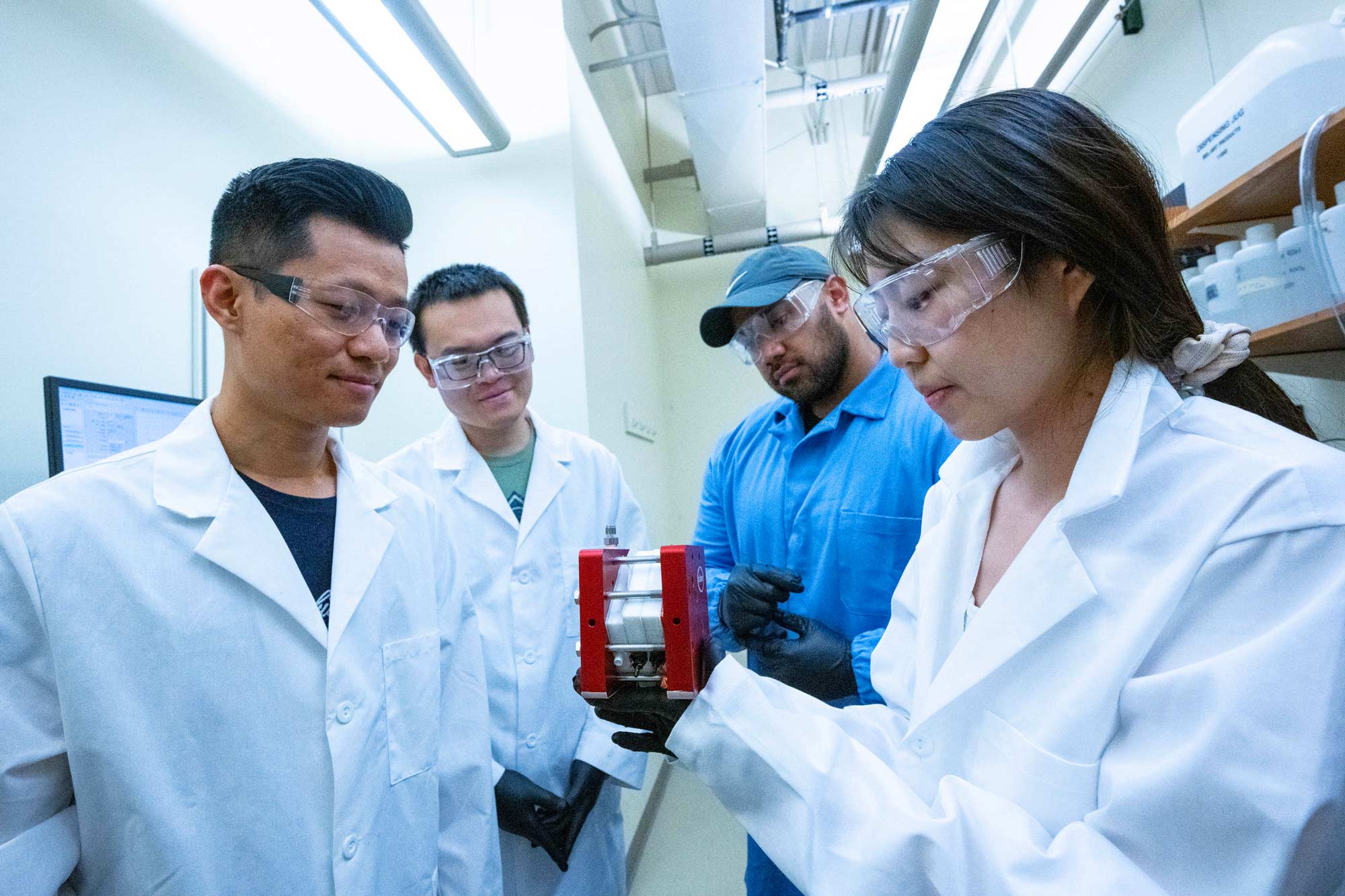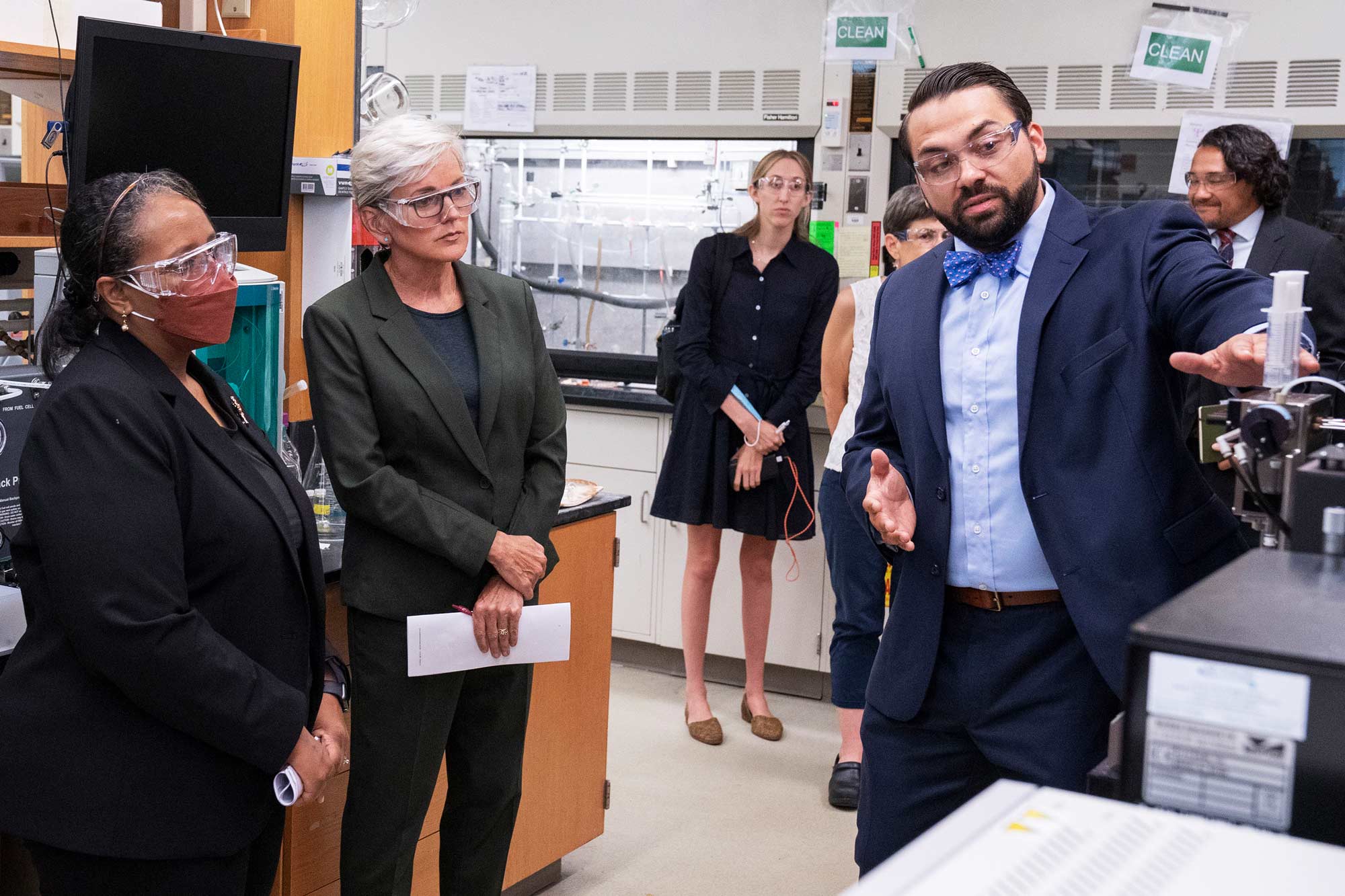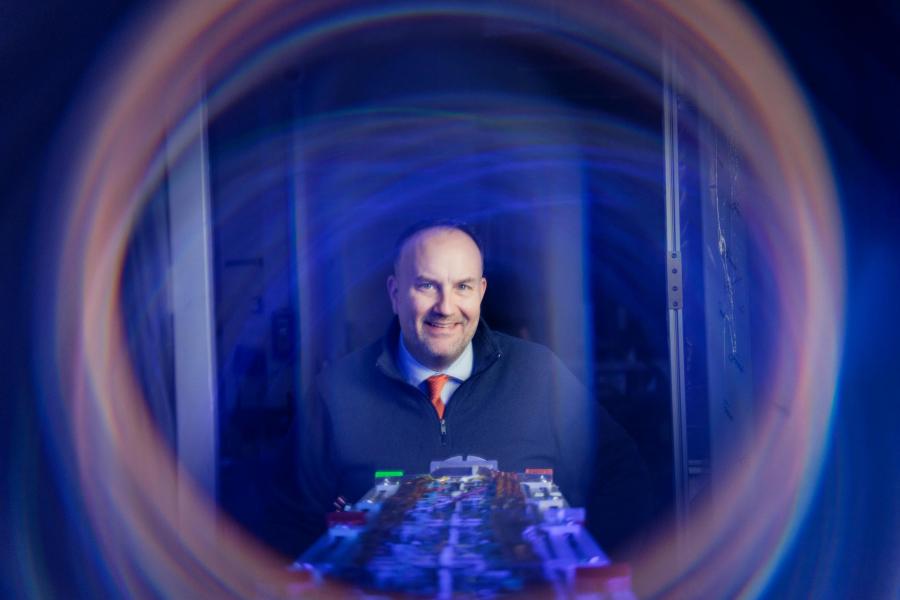Commonwealth Professor of Chemistry T. Brent Gunnoe, a co-investigator on the project, agreed.
“If you can produce inexpensive hydrogen using solar energy, it opens the door to paradigm shift for energy production and use,” Gunnoe said. “It really opens up an enormous range of options, including both energy and large-scale chemical production that is necessary for modern society.”
Zhang and Gunnoe will partner with two other faculty members in the Chemistry Department: Charles Machan, an associate professor of chemistry, and Huiyuan Zhu, a newly hired assistant professor of chemistry.
The professors will be assisted by undergraduate and graduate students on the effort.
The University will also team up with co-investigators from Brookhaven National Laboratory, the California Institute of Technology, Columbia University and the University of Delaware to work on separate but related aspects of the challenge.
The project dovetails with UVA’s Grand Challenge to generate research that promotes environmental resilience and sustainability.
The Opportunities Ahead
Carbon dioxide, emitted from cars and industry, is considered one of the major contributors to climate change.
If hydrogen were cheaper, hydrogen fuel-cell vehicles, which use compressed hydrogen gas and emit only water, would become more viable. However, these vehicles still have some challenges to overcome. Range of travel and the relatively more flammable fuel are concerns.
But for these UVA researchers, the bigger play is liquid engine fuels made with a process that doesn’t require new petroleum extraction.
Scientists know how to combine hydrogen with carbon dioxide to produce liquid fuels that are safe to use, Zhang said. And they know how to capture carbon dioxide from the atmosphere – although this vision requires the development of large-scale technologies for capture.
